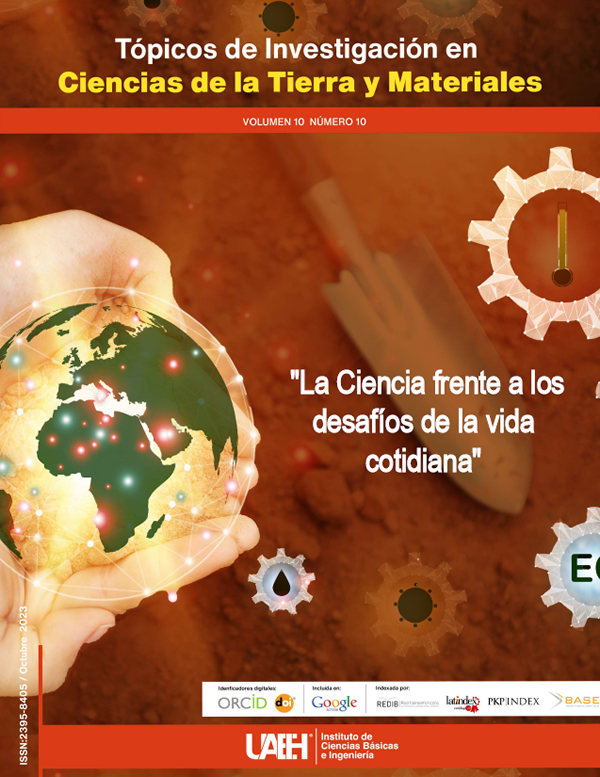Evaluation of mechanic polishing on steel using optic interferometry
Abstract
An important part for the application of electrochemical processes on metals is an adequate surface preparation; this is crucial to obtain accurate and reliable results. This is why several surface preparation methods are used, among which mechanical polishing is presented as a safe and low-cost alternative. This method involves the use of physical tools and abrasives to remove imperfections on the metal surface, such as grinding lines, scratches, manufacturing defects and pitting. However, not all mechanical polishing processes are the same, and it is important to determine the irregularities present on metal surfaces. For this purpose, various surface measurement
and analysis techniques can be used, most notably the Michelson interferometer with red monochromatic light. This tool allows the measurement of surface irregularities, as well as the determination of polish quality and uniformity.
Downloads
References
Almeida, E. (2001). Surface treatments and coatings for metals. A general overview. 1. Surface treatments, surface preparation, and the nature of coatings. In Industrial and Engineering Chemistry Research (Vol. 40, Issue 1, pp. 3–14). ACS.
https://doi.org/10.1021/ie000209l
Hariharan, P. (2007). Basics of Interferometry. Elsevier. https://doi.org/10.1016/B978-0-12-373589-8.X5000-7
de Groot, P. (2015). Principles of interference microscopy for the measurement of surface topography. Advances in Optics and Photonics, 7(1), 1. https://doi.org/10.1364/AOP.7.000001
Dickman, A. (2007). The science of scratches—Polishing and buffing mechanical surface preparation. Metal Finishing, 105(10), 13–29. https://doi.org/10.1016/S0026-0576(07)00048-7
Ebnesajjad, S. (2010). Surface Preparation of Metals. In Handbook of Adhesives and Surface Preparation:Technology, Applications and Manufacturing (pp. 83–
. Elsevier. https://doi.org/10.1016/B978-1-4377-4461-3.10006-9
Kurzweil, P. (2009). HISTORY | Electrochemistry. In Encyclopedia of Electrochemical Power Sources (pp. 533–554). Elsevier. https://doi.org/10.1016/B978-044452745-5.00007-1
Mandich, N. V. (2003). Surface preparation of metals prior to plating: Part 1. Metal Finishing, 101(9), 8–22. https://doi.org/10.1016/S0026-0576(03)90245-5
Plieth, W. (2008a). Deposition of Alloys. In Electrochemistry
for Materials Science (pp. 231–262). Elsevier. https://doi.org/10.1016/B978-044452792-9.50010-5
Plieth, W. (2008b). Nucleation and Growth of Metals. In Electrochemistry for Materials Science (pp. 195–229). Elsevier. https://doi.org/10.1016/B978-044452792-9.50009-9
Schwenke, H., Neuschaefer-Rube, U., Pfeifer, T., & Kunzmann, H. (2002). Optical Methods for Dimensional Metrology in Production Engineering. CIRP Annals,
(2), 685–699. https://doi.org/10.1016/S0007-8506(07)61707-7
Walczak, D., Krolczyk, J. B., Chudy, R., Gupta, M. K., Pruncu, C., & Krolczyk, G. M. (2023). Role of optical measurement systems in analysing the surface topography of an industry standard component. Optik, 283. https://doi.org/10.1016/j.ijleo.2023.170919
Zygo corporation. (1993). Interferogram interpretation and evaluation handbook (Fourth edition).
Copyright (c) 2023 Esteban Rueda Soriano , María Patricia Gallardo Castro, María Aurora Veloz Rodríguez , José Manuel Saucedo Solorio

This work is licensed under a Creative Commons Attribution-NonCommercial-NoDerivatives 4.0 International License.












